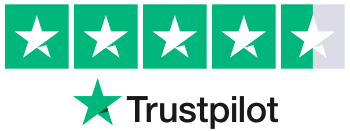
Clear and open communication is the foundation of a cohesive team. When team members feel comfortable expressing their ideas, concerns, and feedback, it builds trust and facilitates collaboration.
Managers should have regular one-on-one meetings with each team member to check in on any issues and provide guidance. An open-door policy encourages employees to voice concerns as they arise. Weekly team meetings provide a forum for addressing challenges, brainstorming solutions, and aligning on goals.
Consider using collaboration tools like Slack or Microsoft Teams to enable ongoing conversations. Make sure remote employees have multiple channels for staying connected. Recognize team members who communicate effectively and foster open dialogue.
It’s also important to model open communication as a leader. Admit when you make mistakes, seek feedback regularly, and share company information transparently. Listen without judgment and make yourself available. Provide context to explain the reasoning behind decisions. Follow up on concerns voiced to show you are paying attention.
Building Camaraderie Through Events
Hosting social events outside of work helps teams bond on a more personal level. These could include team lunches, after-work happy hours, outdoor adventures like hiking or kayaking, volunteering events, or attending sports games or cultural events.
Consider covering some costs to remove financial barriers to participation. Make events optional, infrequent enough to not feel burdensome, and inclusive so all team members feel comfortable attending.
Rotate event planning responsibilities so that everyone contributes ideas. Take lots of pictures to capture memories and reinforce connections.
To maximize bonding, choose activities that facilitate conversation and collaboration, like escape rooms, cooking classes, improv workshops, or guided museum tours. Set expectations for polite, professional behavior. However, don’t micromanage – let loose and have fun! Follow up with a team debrief on what worked well and how to improve future events.
Encouraging Friendly Competition
Friendly competition can energize teams and bring out their competitive spirit in a positive way. Contests, leaderboards, or games centered around professional development goals like sales targets, productivity metrics, or wellness initiatives like step counts can motivate and engage.
Make sure the focus stays on having fun and building camaraderie instead of cutthroat competition. Offer small prizes like gift cards, extra PTO, or public recognition. Ensure fairness by establishing clear rules and tracking transparently.
Consider tying competitions to company values to reinforce desired cultural behaviors. For example, have a “collaboration contest” for the team that uses videoconferencing, messaging, and shared docs the most. Or a “customer service challenge” for resolving support tickets quickly and delightfully.
Promoting Workplace Wellness
A healthy, energized team is a more cohesive team. Offer fitness benefits like gym discounts or on-site yoga classes. Provide healthy snacks and meals. Allow flexible schedules for exercise. Sponsor corporate walking challenge or other wellness contests.
Be flexible with sick leave and encourage true health-related time off when needed. Set an example by taking care of your own physical and mental health. A culture of wellness improves morale, productivity, and cohesion.
Consider subsidizing wearable devices to help employees track fitness and sleep goals. Bring in nutritionists for lunch and learn about healthy eating. Set up ergonomic workstations. Offer mental health days and counseling benefits. Institute “meeting-free” blocks on calendars for focused work. A comprehensive approach to wellness pays dividends.
Facilitating Cross-Departmental Collaboration
Siloed teams that rarely interact can hamper company-wide cohesion. Identify projects that would benefit from a cross-functional team. Assign team members from different departments and set expectations for collaboration.
Rotate staff to different teams to broaden perspectives. Bring together different departments for brainstorming sessions on company-wide challenges. Enable collaboration through open office layouts, centralized databases, shared meeting spaces, and collaboration technology.
Make sure remote employees are looped into cross-departmental initiatives through videoconferencing and site visits. Have team-building exercises at all-hands meetings. Celebrate cross-departmental successes.
Encourage informal connections like mentorships between experienced employees and new hires across departments. A matrixed organization structure can further break down .
Providing Opportunities for Growth
Investing in employee growth and development makes team members feel valued and builds loyalty. Offer training workshops, webinars, mentorships, and tuition reimbursement. Cover conference fees and travel costs for industry events.
Support side projects that enable employees to develop new skills. Be flexible with schedules to allow for classes. Track progress and celebrate growth to keep team members motivated.
Make sure managers set aside dedicated time for 1:1 coaching and career development discussions. Institute internal job rotation and shadowing programs. Bring in speakers and host workshops led by team members on their areas of expertise.
Set up “lunch and learn” sessions for informal peer learning. Maintain a library of books and resources. Growth opportunities demonstrate an investment in employees as lifelong learners.
Promoting Work-Life Balance
When team members feel supported in achieving greater work-life balance, they are less stressed, more energized, and more loyal. Offer flexible schedules and remote work options when possible. Be understanding about personal obligations.
Encourage taking vacations and disconnecting outside work hours. Set reasonable deadlines that don’t require excessive overtime. Lead by example when it comes to maintaining healthy boundaries and avoiding burnout. A culture of work-life balance improves morale and cohesion.
Communicate schedules and expectations around availability so employees can plan effectively. Discourage after-hours work by not sending emails late at night. Institute “no meeting” blocks on Fridays. Empower teams to set their own ground rules.
Model balance personally by being present with family and taking time off. A balanced team is a happier, healthier, and more cohesive team.
Cultivating Diversity and Inclusion
Diverse teams are more creative, collaborative, and effective. Provide bias and diversity training. Shut down insensitive comments. Make hiring and promotion processes objective and equitable.
Sponsor employee resource groups that provide support and community. Celebrate multicultural holidays and events. Seek input from underrepresented groups. Diversity brings out the best in teams when paired with true inclusion.
Offer opportunities like book clubs, film screenings, and guest speakers to explore diverse topics. Weave discussions on bias into regular meetings. Challenge assumptions respectfully. Share personal stories and backgrounds to build understanding.
Support causes that matter to underrepresented groups. Make accommodations readily available. Promote diversity at all levels of the organization. Move beyond surface-level inclusion to empower marginalized voices.
Maintaining Transparency and Trust
Trust is the glue that binds cohesive teams together. Adopt a transparent communication style. Explain the reasoning behind decisions. Be honest about the challenges the company is facing. Hold yourself and other leaders accountable.
Deliver constructive feedback sensitively but directly. Follow through on promises. Listen sincerely to concerns. Trust takes time to build but determines the strength of team relationships.
Institute anonymous surveys to identify areas of mistrust. Admit mistakes readily and share learnings. Extend trust to earn trust. Avoid placing blame. Handle sensitive information thoughtfully.
Model vulnerability and openness yourself first. Trust compounds when consistently reinforced through words and actions. A foundation of trust supports a thriving, cohesive team.
Fostering Social Responsibility
Companies that support social causes and environmental sustainability initiatives tend to have more unified, engaged employees. Provide volunteering opportunities on company time, like serving meals at a homeless shelter or cleaning up a beach. Match employee charitable donations.
Organize supply drives for schools, food banks, or animal shelters. Set up recycling and composting programs in the office. Offer incentives for carpooling or public transit use. Pursue B Corp certification to meet rigorous ethical standards.
Promote transparency around supply chain ethics and environmental impact. Allow employees to set sustainability goals. Reinforce that pursuing social good and business success can coexist through a thoughtful CSR program.
Encouraging Workplace Fun
While work demands focus and dedication, an element of fun in the office can boost morale and bring teams together. Have a monthly “Fun Friday” where everyone can dress casually, decorate their desks, and enjoy a longer lunch. Plan spirit weeks with themed dress-up days.
Decorate for holidays and celebrate with potlucks, contests, and team activities. Encourage personalization of workspaces with photos, plants, and other trinkets that show individuality.
Organize field days, picnics, or trips to amusement parks. Have regular activities like yoga or meditation breaks. Set up game areas with ping pong, foosball, or video games that can be used during breaks.
Sponsor classes like cooking, mixology, or art workshops that offer a creative outlet outside of daily work. Allow remote employees to participate virtually. Lighthearted fun provides a release valve for workplace stress and energizes teams.
As long as productivity remains high, allowing time for play can remarkably improve morale, engagement, and cohesion. Laughter forges bonds. Spontaneous fun makes the office feel like a second home. A blend of professionalism and playfulness creates a dynamic culture.
Conclusion
With a comprehensive strategy encompassing communication, events, wellness, development, balance, diversity, trust, social responsibility, and fun, leaders can cultivate an extraordinary level of cohesion across teams and departments. When employees feel unified by shared purpose, values, and culture, the organization can thrive.
By taking a holistic approach focused on connection, inclusion, transparency, and care for the individual, leaders can cultivate workplace cohesion and a thriving office culture. The ultimate goal is a workplace where every team member feels valued, empowered, and committed to shared success. What strategies have you found most effective for promoting cohesion?










